 |
 |
 |
IS CRUDE O�L ABOUT TO BE EXHAUSTED �N THE WORLD?
Just like all the other non-renewable energy resources, oil reserves are also limited. Nevertheless, oil reserves that can last for long years are available and new reserves are |
waiting to be found and processed under the ground. Thanks to the advanced technology, oil is being searched, found and processed even in the deep sea and regions where the ground has a complex structure. Even though it is commonly known that oil will be exhausted within nearly 40 years, this is just because of some misunderstanding. (World reserves/average production is 40.3 years as of the end of 2002). |
|
 |
 |
CRUDE OIL
|
Liquid hydrocarbons that are created with the metamorphosis of organic materials in the earth and accumulated in the porous rocks are called crude oil. The term �crude� used before oil shows that it is a raw material and is not processed yet. Crude oil is decomposed (distillated) into components in refineries and obtained with many intermediates and fuel oil products that we use in our daily life. |
|
|
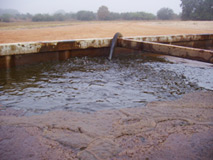 |
JET FUEL
|
|
It is a colorless and transparent oil product. It is obtained by adding some special additives to Kerosene known as gas oil. As jet engines started to replace piston airplane engines, it became necessary to use jet fuel instead of gasoline.
Inflaming point needs to be high because jet engines are operated with continuous inflaming. This point is nearly 44 �C in jet fuels. Planes must go up to high altitudes in order to stay away from weather conditions, economize on fuel and not to be affected by some factors such as friction. Therefore, the freezing point of jet fuel has to be high. This freezing point is around - 50 �C. Moreover, some sections of planes are used as fuel tanks in order to store the required amount of fuel. For this reason, the fuel used in |
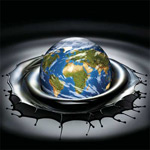 |
| planes should not corrode and not contain much water. The jet fuel used in civil planes is JP 1~ JET-Al and JP 4 in military planes. |
| |
NAPHTHA
|
|
Naphtha is the name of colorless, volatile and flammable liquid hydrocarbon mixtures that are obtained during the distillation of crude oil under atmospheric conditions (30-170�C). The word naphtha was historically used in Baku and Iran to name a kind of slight oil leakage reaching to the ground. Naphtha chemically composes of parafinnic, naphthenic and aromatic hydrocarbons. Naphtha is commonly used as an intermediate for the production of solvents and other substances. Gasoline and kerosene that we use in our cars are technically among the naphtha group mixtures.�
|
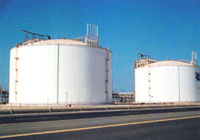 |
| LPG |
(liquefied petroleum gas). It is a term that is usually used to define liquefiable gases at low pressure and containing hydrocarbons with 3 or 4 carbons (C3 and C4). In its natural form, LPG is a colorless, scentless substance with no toxic property. It is denser than the air and is stored in liquid form under pressure. It is used with the addition of some odorous substance in order to be recognized in case of leakage. |
LNG
|
|
When natural gas is cooled to -160�C at atmospheric pressure, it liquefies and is named as liquefied natural gas (LNG).If one unit volume of LNG is vaporized; approximately 600 units volume of natural gas is obtained. LNG has a density lower than the half of the density of water. In its natural form, LNG is a kind of scentless, colorless, non-corrosive liquid without any toxic effect. It is used by adding some odorous substances in order to be recognized easily when vaporized. |
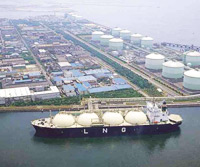 |
| FUEL OIL |
|
Products at different viscosities named as heavy fuel or fuel oil are obtained as a result of blending distillation products and residues according to various principles after the distillation of diesel between 185 � 360 oC. These mostly contain heavy hydrocarbons. According to ASTM �D396 classification, fuel oil is divided into five categories. For the determination of fuel oil kinds, their densities, specific gravity, inflaming points, carbon amounts, viscosities and sulfur amounts are analyzed. |
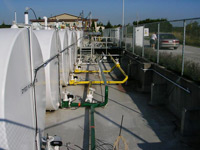 |
|
|
|
 |







